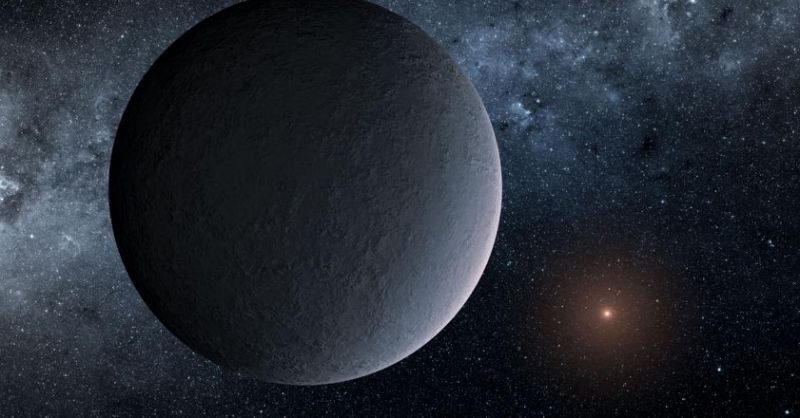Scientists have spotted a gigantic exoplanet that they believe is hiding deep at the center of the Milky Way, about 22,000 light-years away from Earth, a large team is reporting in a paper recently posted on the physics pre-print server arxiv and submitted to The Astrophysical Journal.
The new planet orbits a star a little smaller than our own sun at about twice the distance that Earth orbits the sun. The exoplanet has been given the clunky label OGLE-2016-BLG-1190Lb, but don’t let the name bore you. It’s a little bigger than 13 Jupiters smooshed together, which means that for a planet, it’s really, really big—in fact, it may actually be large enough to be a tiny little star, what’s called a brown dwarf, instead.
Brown dwarfs are less charitably known as “failed stars” since they don’t actually have a stellar oven at their heart creating energy by fusing together atoms. But they’re still classified as a star because they produce light. The boundary between planet and brown dwarf falls right at 13 Jupiter masses, so given the scientists’ uncertainty about the new object’s precise size, it’s having a bit of an identity crisis.
But the scientists are actually less intrigued by its precise size than by how it formed: Traditionally, the things we call planets formed by lumps of stuff sticking together in a disk around a star, whereas stars are formed by a giant cloud of gas breaking down into stars.
Astronomers are particularly intrigued by the new planet because it is tucked deep in the heart of the Milky Way, in what’s called the galactic bulge. Usually, it’s hard to spot planets in this region since they’re tens of thousands of light-years away and don’t produce light.
The scientists were able to spot the planet by using a technique called microlensing, the only approach that allows them to spot planets deep in the galaxy’s heart. If a very large cosmic object with a very strong gravity, like a star, lies between Earth and a target, it bends the light of the distant object. That pattern varies when the distant star is accompanied by a planet. So scientists are able to work backward from what they know of the distant star and how its light changes to figure out precisely what’s coming between it and Earth.
NASA’s Spitzer Space Telescope, which has been chasing Earth in orbit around the sun for 14 years, has helped spot exoplanets before using the same microlensing technique.
Source: yahoo.com



































